- Lightroom Presets
- Mobile Presets
-
Photoshop
-
Learn
-
Support
-
Install
- Best Sellers
- Blog
By Laurie Yuenger on | No Comments

Several areas of the world are buried in snow right now. Some people love it, and some do not. While certain aspects of Winter do not agree with me, one thing I love about snow is getting the chance to capture some unique and magical images of snowflakes.
Here are my top tips to get you started with Snowflake Photography!
Let's start by reviewing the gear that you will need to capture the beautiful microscopic details of a snowflake:
As mentioned above, a "poor man's macro setup" is an inexpensive way to convert your existing lens into a macro lens by utilizing a cheap reverse adapter ring attachment to put your lens on backward. The meter will not work; you will have to adjust the aperture manually, but you will get macro abilities. This method can be challenging, but it's cheap and can be a lot of fun!

When photographing snowflakes, I highly recommend shooting in manual mode to allow for complete control over your camera settings. I also recommend shooting in RAW to capture all the exquisite details.
While there is no single camera setting formula that will work perfectly for every photo, there are some generally recommended settings you can start with and then adjust according to your situation:
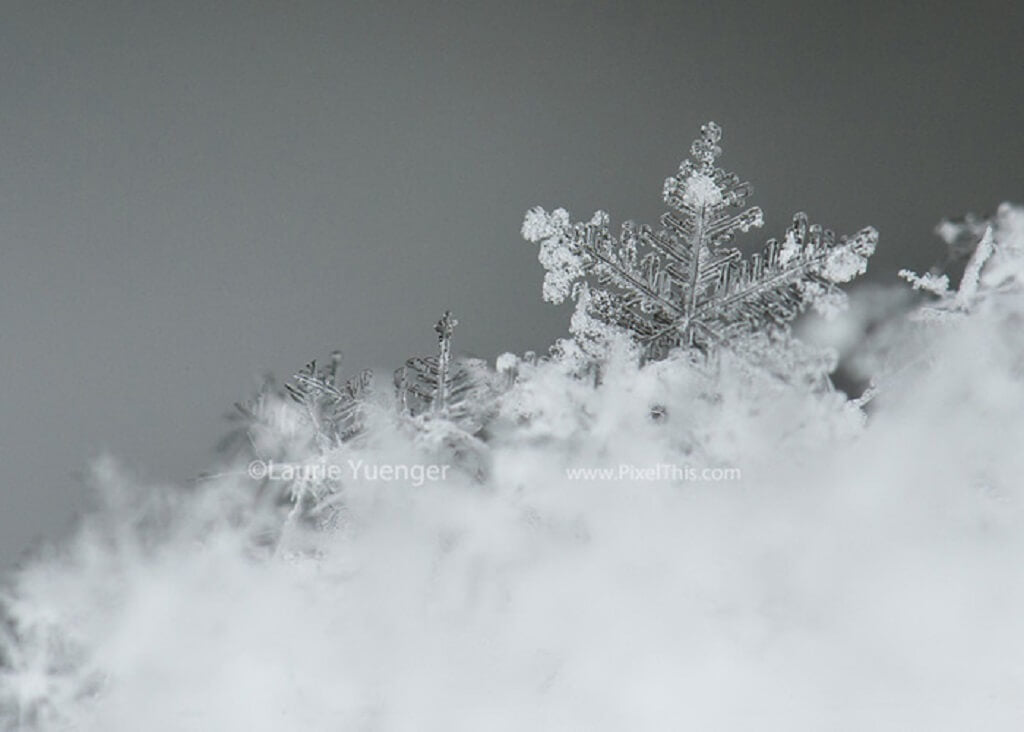
You can often see flake patterns with the naked eye. I like to search for individual snowflakes, then work on focus. Not every snowfall will have flakes like these!
Sometimes, snow comes down in clumps or looks more like shaved ice. Sometimes it's a mix. Sometimes the consistency changes as it snows: it may start as poor-quality flakes, and then 15 minutes later, you may find the most awesome snowflakes ever (yes, I've had that happen)!
So if you're not finding great snowflakes to shoot at a particular time, go inside, warm up, and try again later if it's still snowing.
To find the best snowflakes, I search fence tops and look for flakes that stick up once the snow builds up. Or, I put out fabric to catch snowflakes as they fall (see the backgrounds section below).
It is helpful to find flakes you can shoot straight on (flat side to you, not at an angle to the camera). This is because the depth of field is so shallow for snowflake macro work that I find when I shoot at an angle, sometimes, the middle of the flake is in focus, and both edges are not! By photographing them straight on, you can get the whole snowflake in focus.
Below is an example photo of a snowflake shot from an angle. You can see that both edges of the flake are slightly out of focus:

Below is the same image, but cropped in close (about 100% crop), so you can really see the out-of-focus edges:

Cameras tend to need help locking focus when a subject is too close. So switch your lens/camera to manual focus mode and adjust it so it focuses as close as possible while achieving maximum zoom.
Then line up the camera with the flake and use your body to move closer or further until you see the snowflake come into focus (this is like magic when you see it happen).

It can be challenging to tell if you nailed the focus perfectly on a camera's LCD, so take a lot of shots and spend some extra time to ensure they are. If I REALLY, REALLY like a particular snowflake, I will take 5-10 photos to be sure!

When shooting snowflakes, try experimenting with different backgrounds:
Here are some of my FAVORITE snowflake photos using various backgrounds:
For the image below, I used a fur fabric background (the fur was brown, but I edited it to look blue in post-processing to fit better with the cool color of the snow):
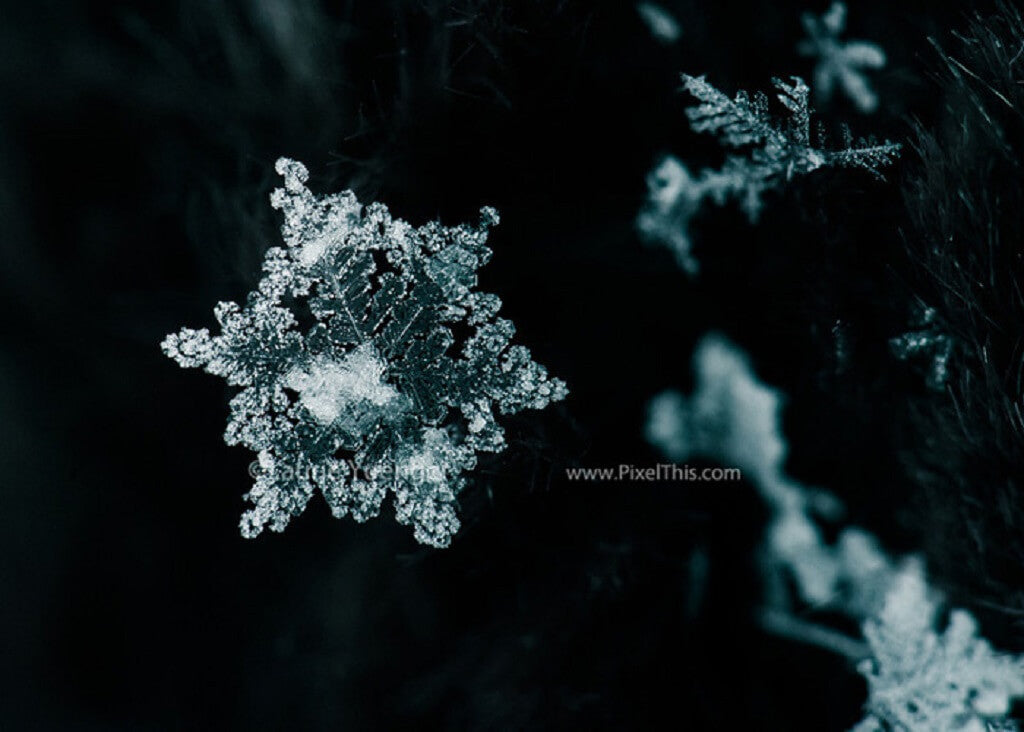
For this next image, I used a blue and white scarf (fleece-type material) for my background:

The next snowflake image was shot on my fence, with a neighbor's house in the distance as a backdrop. Notice how the shaded areas behind the flakes help to make them pop:
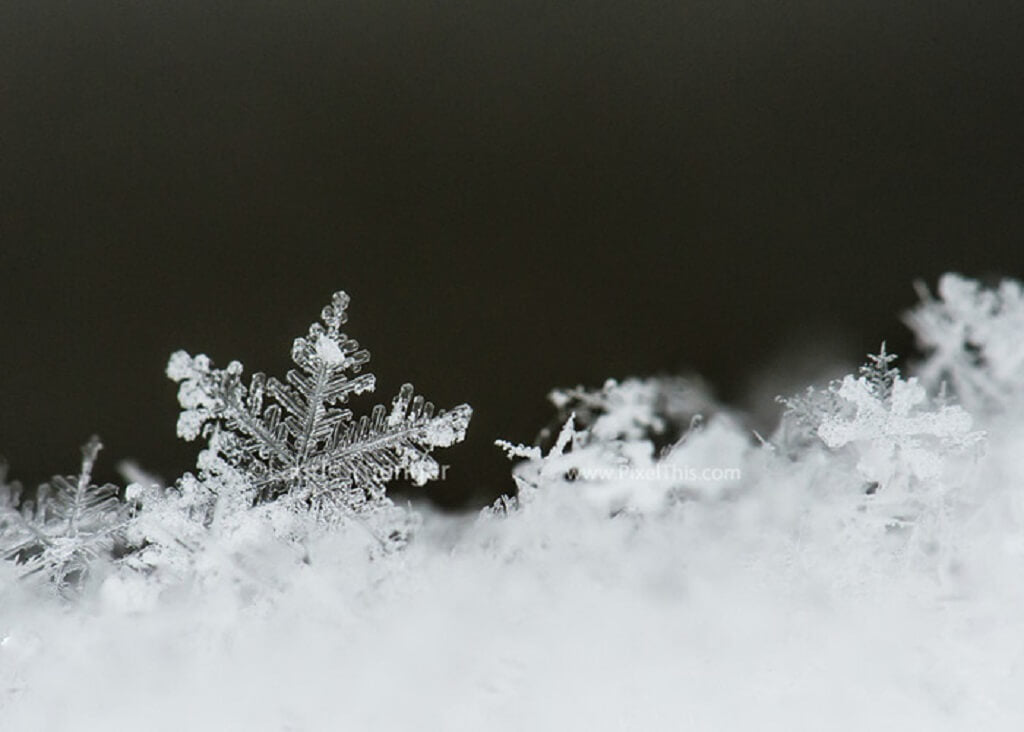
For the following image, I used a black sheet-type fabric background:
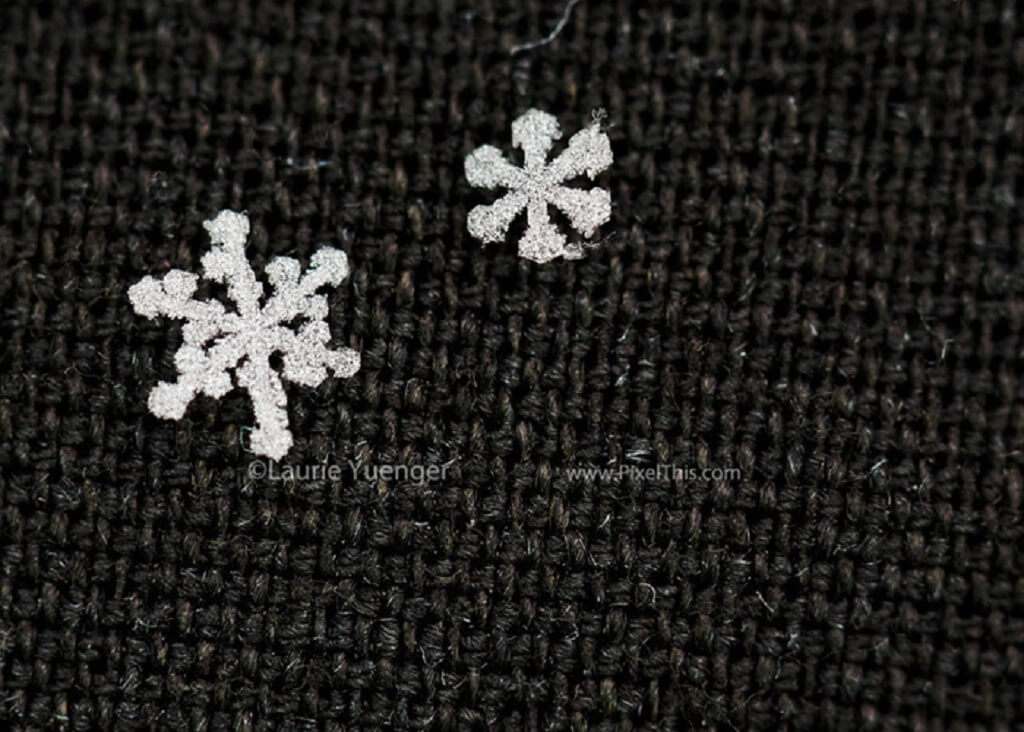
For the next image, I used a plexiglass sheet for a background. I keep a ready-to-use sheet in the garage, so it's already cold and won't melt the flakes when it catches them.
Then before I start shooting, I place the plexiglass at an angle against the garage over a small bush so the background colors of the bush show through:
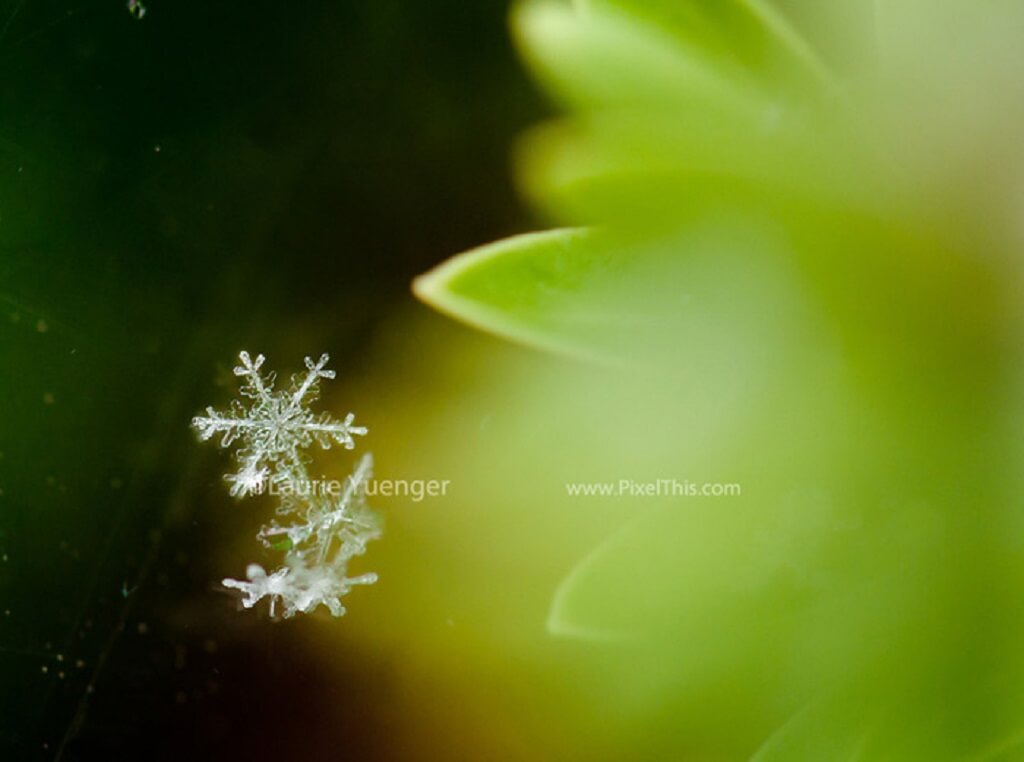
Feel free to try different snowflake compositions to add interest. There is no right or wrong way to do it, so experiment and have fun!

Since it doesn't snow in all areas of the country and world, you may have to use an alternative to add that wintery touch to your images.
If you're looking for some great Photoshop Snow Actions to add REAL Snow elements to your images, I highly recommend the Let it Snow Winter Photoshop Action and Brush Collection. There's an excellent tutorial for the set here too.
Do you have any questions or comments about How to Photograph Snowflakes? Leave us a comment below - we would LOVE to hear from you! And PLEASE SHARE our tutorial using the social sharing buttons (we really appreciate it)!




While Laurie grew up in California (where she received her first lessons in photography from her father) she has enjoyed her adult life traveling around the US and the UK as a military wife. A tomboy at heart she is usually sporting a ponytail and jeans. She has been a professional photographer for over 7 years, photographing children, families and weddings, but her love is the challenge of photographing babies and toddlers. She also enjoys photographing the local landscapes as they travel, as well as natures fine details (macro). Her family is currently stationed at Scott AFB Illinois where she has a studio called Pixel This in nearby Swansea. Laurie is also the creator of “Dear XYZ“, a customer relations book specifically for photographers. You can visit Laurie at her WEBSITE | FACEBOOK pages.

Comments